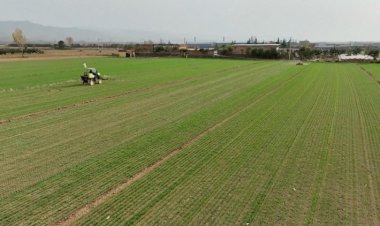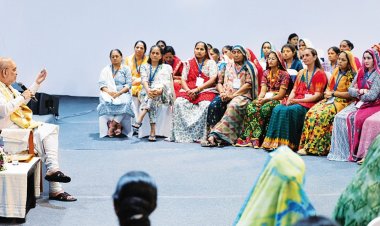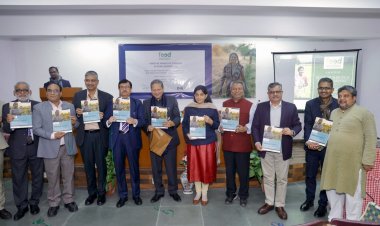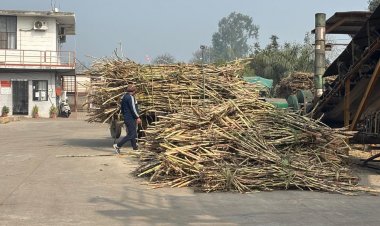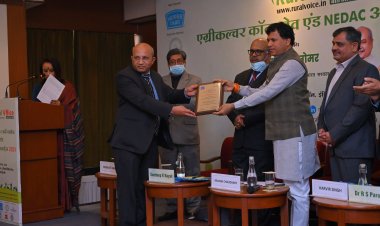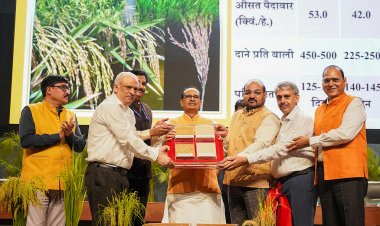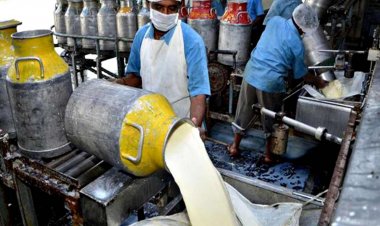Union Budget needs to peg big fund to boost rural economy
The rural economy is still distressed. Inflation has been pinching hard, and real wages have fallen—both resulting in sluggish spending. As the Centre readies its next Union Budget, economists say this problem needs urgent focus. During the Covid-19 lockdowns, rural areas were a silver lining, with agriculture extending support to India’s GDP. The government raised its spending under the MGNREGS to create jobs for those who had returned from cities.
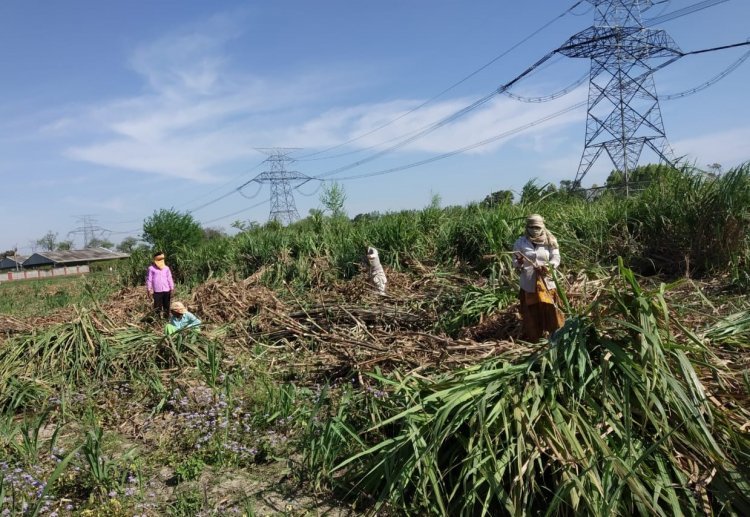
It's time for the Union Budget once again. But, more importantly, this will be the last full budget before the 2024 Lok Sabha elections. If the Narendra Modi government wants to boost jobs and affordable housing before the national elections, India may have to raise its rural spending by nearly 50 per cent next fiscal year.
Finance Minister Nirmala Sitharaman is in the midst of holding parleys with various stakeholders before she presents the 2023-24 budget on February 1. India's fiscal year starts on April 1 and runs through March.
The government had allocated 1.36 trillion rupees to the rural development ministry for the current fiscal year but it could spend more than 1.60 trillion rupees.
The increased spending is mainly to address pandemic-driven stress in rural areas that has driven up demand for the country's only minimum job guarantee scheme, the Mahatma Gandhi National Rural Employment Guarantee Scheme, or MGNREGS, which pays $2 to $3 a day.
The country's rural areas were under pressure from rising prices and limited non-farm job opportunities, forcing more people to sign up for the government's job scheme.
Led by Prime Minister Modi, the Bharatiya Janata Party (BJP) swept the national elections for the second time in 2019, making him one of the most popular leaders in the country since its Independence.
Modi, however, has had a mixed record of managing the economy and has been criticised in certain quarters for rising unemployment.
The rural unemployment rate has remained above 7 per cent for most of the months in the current fiscal year, according to data from the Centre for Monitoring Indian Economy (CMIE), a private think tank. The rural unemployment rate was 8.04 per cent in October, according to CMIE.
For the current year, the government had initially budgeted 730 billion rupees for the job scheme and 200 billion rupees for the housing scheme. It has already spent 632.6 billion rupees on the jobs programme, according to the rural development ministry's website.
In 2022-23, the Department of Rural Development has been allocated Rs 1,35,944 crore, which is an 11 per cent decrease from the revised estimates for 2021-22. The Department of Land Resources has been allocated Rs 2,259 crore, which is a 52 per cent increase over the revised estimates for 2021-22.
But the rural economy is still distressed. Inflation has been pinching hard, and real wages have fallen—both resulting in sluggish spending. As the Centre readies its next Union Budget, economists say this problem needs urgent focus.
During the Covid-19 lockdowns, rural areas were a silver lining, with agriculture extending support to India’s GDP. The government raised its spending under the MGNREGS to create jobs for those who had returned from cities.
Even as the overall economy recovered, rural India continued to face challenges. High inflation was a nationwide problem this year, but higher food prices made it even worse for rural India. Rural retail inflation exceeded the urban one for the entire year. Worse, wage growth did not keep pace.
The Mahatma Gandhi National Rural Employment Guarantee Act (MGNREGA), passed in September 2005 by the then UPA government, was aimed at helping India’s most disadvantaged people.
At its core, MGNREGA is a safety net for the rural poor that guarantees 100 days of employment in a year to every registered household. With the introduction of MGNREGA, the then chairperson of UPA, Sonia Gandhi, tried to temper the hard market economics with some compassion.
MGNREGA is also good economics. Instead of the present-day dole-outs transferred seamlessly through UPI, the MGNREGA championed the dignity of productive work that would build rural infrastructure.
Though political opponents scoffed at MGNREGA, the Economic Advisory Council to Prime Minister Modi, led by its Chairman Bibek Debroy, recently suggested that the government should come out with a guaranteed employment scheme for the urban unemployed.
The council has further mooted the introduction of universal basic income and higher fund allocation for the social sector to reduce inequality in the country.
In FY22, the Centre had budgeted Rs 73,000 crore for MGNREGA but ended up spending almost Rs 98,000 crore due to the continued demand for work.
On average, around 3 crore households seek work under MGNREGA and the number of active workers stands at over 15 crore. Around 3.16 crore households demanded work under MGNREGA in June 2022, compared to 3.07 crore in May, a jump of 2.9 per cent. This indicates that the recovery in labour market is slow and daunting.
However, the household demand for MGNREGA in June 2022 was slightly lower compared to that in June last year, when work demand spiked because of the pandemic.
The latest MGNREGA data corroborates with the unemployment data released by the CMIE, which showed that the June 2022 unemployment rate was higher at 7.8 per cent compared to 7.12 per cent in May.
Rural unemployment in June 2022 registered a significant jump at 8.03 per cent compared to 6.62 per cent in May, while urban unemployment fell to 7.3 per cent compared to 8.21 per cent in May. With 15.51 crore enrolled workers, the MGNREGA scheme has, over its 17-year existence, emerged as an important social security intervention.
Its impact, however, remains patchy. It has to deliver on its 'poverty alleviation' task in states that require it the most while providing an avenue for 'asset creation' in better-off states.
It will not be out of place to mention that the parliamentary standing committee on rural development and Panchayati Raj has proposed the need to make the MGNREGA more women-centric by bringing additional activities that are done by women under its purview.
This was prompted by data from the past five years that showed that more than 50 per cent of the participants under this scheme are women. The stipulated proportion of women required to avail of these jobs is 33 per cent. The proposal would also bring about greater economic empowerment of women.
The committee has suggested that a lot more work has to be done in identifying the strongest linkages to livelihood opportunities open to women, especially in agriculture-related jobs. Not only women as individuals but self-help groups could be provided with new opportunities to augment their income and wealth.
The MGNREGA is a demand-driven scheme. The fact that women have been availing of opportunities under this scheme more than men suggests that they are in greater need of additional income. Women’s labour force participation is very low in India. Therefore, this could be one possible way of raising the ratio.
The force driving higher women’s participation in the MGNREGA is the fact that as men move to cities for work, women left behind in rural areas are eager to avail of guaranteed opportunities.
Tax incentives to agriculture value-chain players, abolition of Goods and Services Tax (GST) on agri inputs, hike in PM-Kisan incentive and fixation of minimum import prices of agri commodities at par with farmgate rates are some of the stakeholders’ recommendations to the Finance Minister while formulating the Budget for 2023-24.
(The author is a New Delhi-based senior journalist, freelance writer, political commentator and public policy analyst.)



 Join the RuralVoice whatsapp group
Join the RuralVoice whatsapp group



















